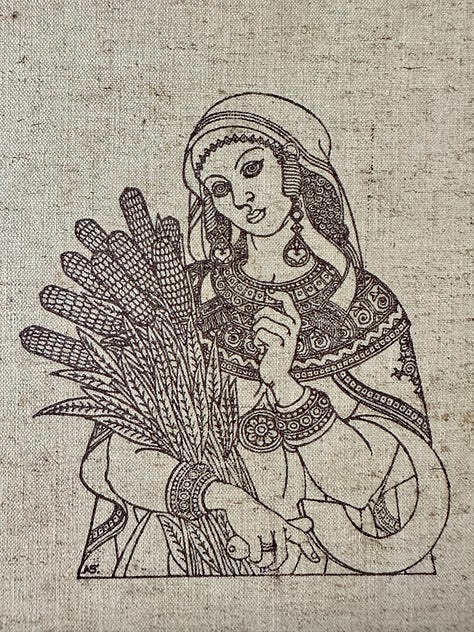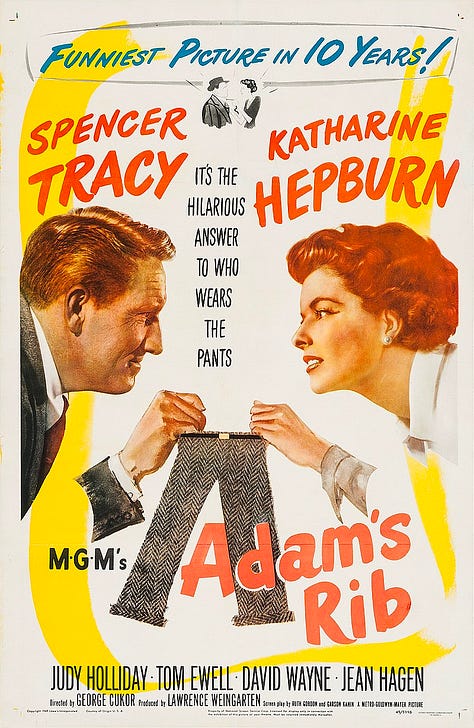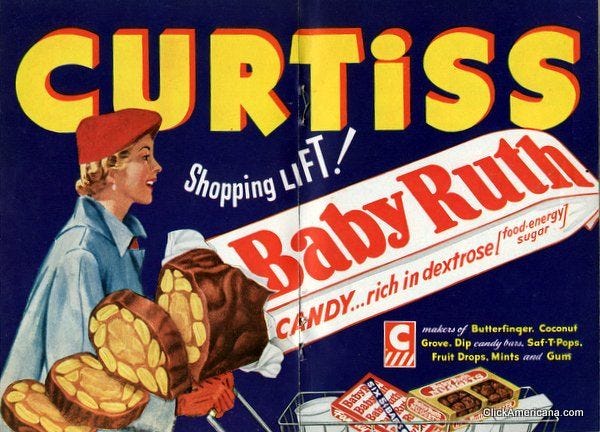On the Jewish holiday of Shavuot, celebrated this past weekend, it’s customary to read the Book of Ruth. As you can imagine, given my first name, this has particular resonance for me. Although I try not to be egotistical, my husband reminds me, not everyone has a famous book with their name attached, especially one that’s a few thousand years old! Here are a few thoughts, plus links to some recipes for lokshen kugel–a sweet noodle casserole that’s popular not only on this dairy holiday but for any occasion—or none at all!
On Being Ruth
As a young girl I didn’t really like my name. There were no other girls I knew called Ruth. Popular girls names in the ‘50s were Mary, Susan, Ann, Nancy, Shirley, Elizabeth, Debby, Laurie, Judy, Kathy, Karen, Linda—but not Ruth. Ruth rhymed with tooth and the other kids, who liked nothing better than to take poetic license with names, called me “Ruthie Toothie.” And then there was that famous candy bar, so sometimes I got teased for being “Baby Ruth.”
I also hated being called Ruthie, though somehow my mother got away with it. (In her Scottish accent, it didn’t sound so bad!) When I got to high school, there was only one other girl I met called Ruth, and she actually went by Ruthie. We were both Jewish, and there weren’t many of us—either Jews or Ruths—in those days. Once, when we were both absent from school for the Jewish High Holidays, the chemistry teacher made a bad joke the next day: “Yesterday we were Ruthless.” Everyone laughed. When I asked my mother why she and my father had named me Ruth, she said it was a biblical name and they had liked it.
One proud possession I had was a slender hardbound book inside a slipcover with a colorful illustration on the front. It was the Book of Ruth, translated from the King James I Bible and illustrated by Arthur Szyk, a Polish-born Jewish artist best known for his anti-Nazi political art and for reviving the medieval tradition of illumination. I was told that my grandmother had given the book to me on my first birthday. I still have it, minus the slipcover, which disintegrated years ago.



In a way, this book helped me learn to like my name because I loved the story and the illustrations so much. Ruth was the name of the heroine, who was said to be the great grandmother of David, the storied slayer of Goliath and later King of Israel. David was also the name of my oldest brother!
But Ruth was the one I most admired. She was a woman of such loyalty that after her husband dies and her mother-in-law Naomi urges her to return to her own people, the Moabites, who are not Jewish, she says the famous words expressing her unbreakable fealty not only to Naomi but also to her adopted faith. She was, in effect, the first famous Jewish convert. In the King James translation, she says,
“Intreat me not to leave thee, or to return from following after thee: for whither thou goest, I will go, and where thou lodgest, I will lodge: thy people shall be my people, and thy God my God: where thou diest, will I die, and there will I be buried.”
I’ve learned that Ruth (pronounced “root” in Hebrew and most other languages, except for some in which my name sounds more like “woot” or Japanese, where the R could be mistaken for an L), means “friend” or “friendship.” Who could object to a name that means that?
And of course there are some stellar examples of women with that name. My favorite is the late Supreme Court justice, Ruth Bader Ginsburg, a passionate liberal voice on the court (remember those days?) who earned and apparently enjoyed being known as , “the Notorious R.B.G.” I’ve got a sticker on my mantle with her unmistakable profile, signature glasses and judicial collar that states: “Ruth is the Truth.” It always reminds me that my niece and nephew, Laura and Jon, like to call me Aunt Truth, partly because their mother, my sister-in-law, is also called Ruth Stroud!
There’s also Ruth Reichl, several of whose books I own and love, whose recipes I make and who also writes a wonderful newsletter on this site. There’s actor and writer Ruth Gordon, unforgettable in the 1971 romantic black comedy, Harold and Maude and co-writer (with husband Garson Kanin) of two of my favorite movies, both starring Katharine Hepburn and Spencer Tracy, Adam’s Rib and Pat and Mike; Ruth Westheimer, the sex therapist with the wicked high-pitched giggle; and Ruth Handler, inventor of the Barbi doll, whom I once interviewed (Ruth, not the doll!).



Of course let’s not forget baseball great Babe Ruth and the aforementioned candy bar, Baby Ruth. The first manufacturer, the Chicago-based Curtiss Candy Company, claimed the candy, once marketed as an “energy bar” and a “complete luncheon for 5¢," wasn’t named for the famous slugger but after the eldest daughter of President Grover Cleveland, even though the Cleveland “baby” had been born three decades before the candy bar’s introduction in 1921 and was already dead by the time it was introduced. It was widely believed that Curtiss made the claim to avoid having to pay royalties, which would have amounted to a fortune. The two parties ended up in a lawsuit. You can learn more about the colorful Babe Ruth vs. Baby Ruth controversy here.
As if that isn’t enough, there are a dozen towns called Ruth scattered from California to West Virginia. There’s also a hamlet in Switzerland that carries my name and a crater on the moon. There’s even an ancient castle in the French Basque country called the Château de Ruthie. One day I’d like to visit!
Well, that’s a deep enough dive down an egotistical rabbit hole! I wonder if any of you have stories about your name, how you got it, and whether it has had a special meaning in your life. If so, I’d love to hear about it. Meanwhile, I’d better quit while I’m ahead or I’ll write my own Book of Ruth!
And now, a break for some kugel!

Kugel!
Shavuot will be over by the time you read this, but kugel, especially a classic sweet one made with noodles, is popular not only during this holiday but year around. In fact, we will mostly likely be eating kugel at our Memorial Day brunch, along with some bagels and lox, and whatever else is on the menu. It doesn’t always have to be a barbecue!
Kugel, a Yiddish word derived from a German word meaning sphere or ball, once meant either a sweet or savory pudding made with noodles or potatoes that Jews from Eastern Europe carried with them to America. In recent years kugel has come to include everything from pumpkin to pomegranates to broccoli to caramelized onions and sriracha. But to many of us, “kugel is a taste of childhood,” notes cookbook author and journalist Joan Nathan, and we want the exact kugel we grew up eating.
In a piece entitled “Kugel Unraveled” that ran in The New York Times in 2005, Nathan wrote about the first published American recipe for kugel. It came from an 1871 Jewish Cookery Book, written in 1871 by Esther Levy. It included a rather simple and classic list of kugel ingredients: homemade noodles, raisins and sugar, bound with eggs. But apparently no dairy.
“Through the years,” Nathan said, “Madison Avenue had its way with kugel. Boxed noodles replaced homemade noodles, canned pineapple and cranberries replaced raisins, and processed cream cheese, sour cream and cottage cheese replaced farmer cheese and other European dairy products.”
And today, folks are adding whatever their imaginations can cook up—and why not? Why should recipes that date back to Eastern European shtetls and Lower East Side tenements at the turn of the 20th century not get a modern spin? But I’m a bit of a traditionalist. I still like the mix of noodles, creamy dairy, sugar and fruit—though sometimes I switch cottage cheese for ricotta, lower the sugar or fat quota, and fiddle with the topping. Still, to me, a noodle kugel is the epitome of Jewish comfort food—and who doesn’t need a little comfort these days?
Tori Avey has several kugel recipes that I’ve tried and liked, including a classic that’s fairly plain, with just a dusting of cinnamon and sugar on top, and a rum-raisin-cranberry kugel that I adapted for Thanksgiving one year. You can find my post here. Another of Avey’s recipes I attempted this year was her pineapple raisin kugel. It uses low-fat cream cheese and sour cream and less butter than some other recipes. I would leave the pineapple out next time and lower the sugar count in the graham cracker crust. I added some sliced almonds on top; I might switch them for pecans next time—or leave them out altogether. The kugel doesn’t really need them!
By the way, it’s totally possible to cater to the gluten-sensitive folks in your life by using gluten-free noodles. I’ve used the Manischewitz brand with great success! There’s also the dairy-free kugel that’s a specialty of Jerusalem that’s made with thin egg noodles bound together with caramelized sugar, egg, oil, and liberal amounts of black pepper. I’ve never tried it, but it’s next on my list. Here’s a recipe for Yerushalmi Kugel.
After my husband Jeff came home one day raving about a kugel he’d tasted at a bar mitzvah he’d been hired to photograph. He claimed it was “the best I ever had.” A woman named Linda sent the recipe in an email:
“Its a very simple recipe and I am happy to share it. I don't personally oversee it every time it is made, and I think the last couple of times someone added vanilla (just a slight amount). Everything we make is done by many hands so there might be slight variations. So glad you enjoyed it!”
Here’s a copy of the recipe, which reminds me of so many uncomplicated dishes I’ve come across in spiral-bound synagogue cookbooks through the years. I made it pretty much as written, adding about 1/4 teaspoon salt, a teaspoon of vanilla and a couple tablespoons more sugar to the kugel, reducing the sugar in the topping by the same amount. I would use the highest-fat buttermilk you can find—or consider replacing about a quarter of the liquid with sour cream to up the richness.
Good wishes on Memorial Day!
Once called Decoration Day and created to commemorate Union soldiers who died in the American Civil War, Memorial Day now honors the memory of all U.S. military personnel killed in the country’s armed forces. For many this is a day on which to have a picnic or barbecue. For others, it might be the occasion to remember a loved one. However you celebrate this holiday, I hope that it’s a good day for you and yours.
Thanks for subscribing, reading, liking, sharing and commenting on this newsletter. I know everyone’s busy, and there are some amazing bloggers out there. I’m grateful to be on your list.
See you soon!
Ruth









Great piece Ruth!
Love this, Ruth! It’s so interesting to hear about your feelings about your name, and I love the company you keep! (Ginsberg, Gordon, Babe and more!) Wonderful about your copy of The Book of Ruth. I have a sister-in-law named Ruth and my Mom (who adored her) always called her ‘Baby Ruth’ ☺️ Thanks for this lovely post. (I was named after a hat shop in Québéc and my life changed in 1974 when Dolly’s song 🎶 came out!
Strangers have been singing to me when they first meet me for almost 50 years! 🤣